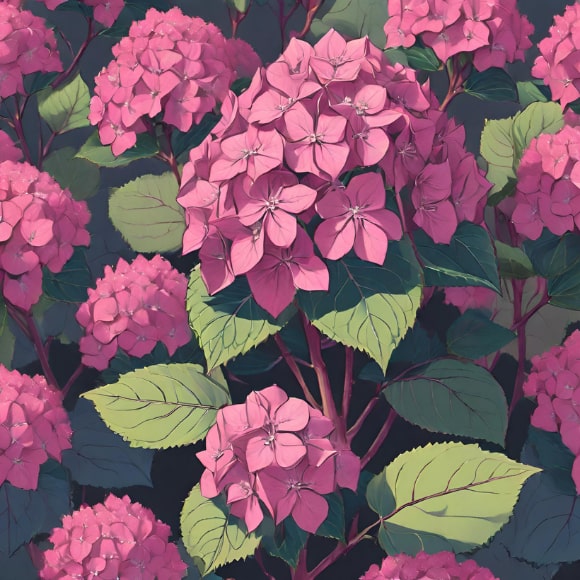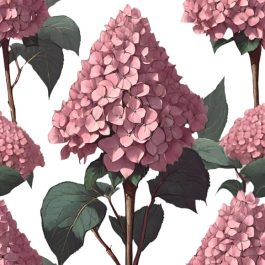
When it comes to hydrangeas, there’s one secret that many new gardeners aren’t aware of: you can actually change the color of your hydrangea blooms, specifically to achieve those stunning pinks and lavenders, by adjusting the pH of your soil.
When I first started gardening, I had no idea about the whole soil pH thing. I just thought, “Hey, I like pink flowers, so I’m gonna plant some pink hydrangeas!” Little did I know, I was in for a bit of a surprise. You see, my soil was pretty acidic, and no matter what I did, those darn hydrangeas just kept blooming blue. Don’t get me wrong, blue hydrangeas are gorgeous, but my heart was set on those soft, blushing pinks.
It wasn’t until I was chatting with a friend of mine that I learned about the secret to turning those blues into pinks. He told me, “you’ve got to sweeten up that soil! Throw some lime in there, and watch the magic happen.” So, I gave it a shot. I worked some garden lime into the soil around my hydrangeas, and lo and behold, the following summer, I was greeted with the most stunning display of pink blooms I’d ever seen! It was like my garden had been touched by a fairy godmother’s wand. From that day on, I was hooked on pink hydrangeas and the simple joy of playing with soil pH to create different colors.
From Blue to Pink Hydrangeas
Pink hydrangea flowers are greatly influenced by the acidity or alkalinity of the soil they are grown in. In more acidic soils with a pH below 6, hydrangea flowers tend to be blue or lavender. But in alkaline soils with a pH above 7, hydrangeas produce those lovely shades of pale and bright pink that so many gardeners desire.
To nudge your soil pH higher and bring out the rosy pinks, you can add garden lime to the soil. This raises the pH, making it more alkaline. I like to do this in early spring, working the lime into the top few inches of soil around my hydrangeas. Over time, as you water, the lime slowly seeps down to the roots. And come summer, voila—pretty in pink! You’ll also want to keep high nitrogen levels and low phosphorous levels, so soil testing helps, but the pH is key!
Now, I should mention that not all hydrangeas are affected by soil pH in this way. But three of my favorite hydrangea varieties for the pink-loving gardener are Zinfin Doll, Gatsby Pink, and Mountain Hydrangea. Let me tell you a bit about each one.

Zinfin Doll is a compact panicle hydrangea that is just smothered in conical clusters of pink and white blooms from midsummer to fall. It’s perfect for smaller gardens or tight spaces, growing just 3-4 feet tall and wide. And while it can tolerate some light shade, all those pink hydrangeas really pop if you can give it close to full sun.
For a taller shrub reaching 6-8 feet, consider the elegant Gatsby Pink oakleaf hydrangea. Its cone-shaped flower clusters open a creamy white in early summer, then mature to a soft pink. Come fall, the foliage turns brilliant shades of red and bronze. And those big oak-shaped leaves add such intriguing texture to the garden.

Finally, for a delightful lacecap look, you must try Mountain Hydrangea. Flat flower clusters ringed with larger sterile florets give these pink hydrangeas such a unique, lacy appearance. The shrub stays a manageable 3-5 feet tall and thrives in part shade. Picture it lighting up a woodland garden or shady border.
With all three of these charming pink hydrangea varieties, paying attention to your soil pH can really intensify and prolong that blushing color. Add lime as needed to keep your pH slightly alkaline, in that 7.0-7.5 range. While you’re at it, keep your hydrangeas happy with consistently moist but well-draining soil, and apply a balanced, slow-release fertilizer in spring.
A bit of gentle pruning and shaping in late winter will also encourage healthy growth and abundant blooming. Just wait until you see those rewarding pillows of pink brighten your summer landscape! I’m confident you’ll fall in love with pink hydrangeas just as much as I have.
If you’d like to learn more about growing your own hydrangeas, read our Hydrangea Gardening in America GuideBook, where we explore these beautiful blooms, as well as different hydrangea varieties and best practices for cultivation. You may also enjoy our Hydrangea Garden Greeting Card Crafting Kit!
Now I’d love to hear from you—do you grow pink hydrangeas in your garden? What are your secrets for achieving that perfect shade of pink? Let me know in the comments below!


